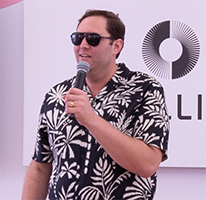Any final assessment on 2001 depends on whether you want to speak optimistically or pessimistically.
A pessimist will shake his head and sadly announce that spending on consumer promotion slipped 3.7 percent to $98.7 billion in 2001, the first decline since PROMO began estimating the industry’s size 10 years ago — which, coincidentally enough, was the last time the U.S. underwent an economic recession.
Talk of a recession in the early part of 2001 had many industry pundits predicting strong growth for the industry: A recession-driven decline in consumer purchasing would have brand marketers cutting ad spending to focus more on promotional tactics that would guarantee sales lifts, according to prevailing wisdom.
In reality, promotion industry revenues sank $3.8 billion as marketers cut their promotion dollars right along with their ad budgets — which fell 4.1 percent to $233.7 billion, according to the annual Insider’s Report from New York City-based Universal McCann’s Robert Coen. (The terrorist attacks of Sept. 11 “devastated advertising in the closing months of 2001,” exacerbating the slowdown which had taken place in the first eight months of the year, according to the report.)
Why? Coen’s report suggests that marketers learned their lesson back in ’92, when post-recession marketers using quick-fix price promotions over advertising found “these tactics do not work.” (Now there’s a pessimist for you.)
Another theory is that projections for growth in promotion spending during a recession weren’t exactly accurate: While allocations for coupons and other price-based tactics may have risen, overall industry revenues were relatively flat during the U.S. recession of 1990-91, and didn’t start to climb until the economy was on the upswing in 1992, according to PROMO estimates (see chart, pg. 4).
Another theory is that the marketing mix has changed dramatically in the last decade, to a point where advertising/promotion is no longer an either/or proposition. (Just check the financial statements of Madison Avenue’s conglomerates and their emphasis on “marketing services” revenue growth as testament to that notion.) After all, the promotion industry is carrying $46 billion more in revenues than it did 10 years ago.
And that’s why the industry’s bright-eyed optimists can smile as they say that spending on consumer promotion declined by only 3.7 percent in 2001. With the massive corporate downsizings and budget reductions that took place in the first half of the year, it could have been a lot worse.
“As an industry, I think we weathered the recession really well,” says PMA chairman Bob Balzer.
Hits and Misses
While numerous product manufacturers were busy reducing payrolls and restructuring marketing budgets throughout the year, Redmond, WA-based Microsoft Corp. kept bragging about the $500 million it was spending to launch the Xbox game console.
That kind of disparity was found throughout the industry, as some marketers increased spending while others stopped almost entirely; as some agencies thrived while others nearly went under; and as some market segments posted healthy growth while others foundered.
In fact, half of the segments tracked by PROMO posted revenue increases for the year — led by an 18.3 percent jump in interactive marketing. The dot-com crash of late 2000-early 2001 separated the online wheat from the chaff, and traditional marketers are now pacing the segment with spending to support long- term, strategic thinking.
(Pessimists will note here that 18.3 percent growth is nothing compared with the meteoric increases projected for online promotion just two years ago; optimists will suggest we’ve just returned to reality.)
The games, contests, and sweepstakes segment saw an impressive 10-percent rise in spending due at least in part to the recession, which had marketers looking for relatively cheap, fixed-cost programs to generate consumer excitement.
Speaking of returning to reality, agency net revenues improved 9.4 percent for the year, which reflects the lowest increase in a decade. But the wealth was not shared equally throughout the industry.
Meanwhile, promotion’s three largest segments — premium incentives, point-of-purchase displays, and promotional products — all saw revenues fall by at least $500 million as cost-conscious marketers scaled back on many programs. Percentage-wise, the biggest drop came in fulfillment (at 15 percent), again due more to a reduction in program scale than to a decline in overall activity.
Promotion Trends
Roughly 53 percent of brand marketers have held consumer promotion spending levels about even with 2001, according to Promotion Trends 2002, the third-annual survey of the industry conducted by PROMO and the PMA.
This year’s survey fielded responses from more than 450 industry executives, with a roughly equal number coming from consumer marketers and promotion agencies/supplier companies.
About 26 percent of marketers surveyed said they increased allocations for 2002, while close to 29 percent have reduced them (see chart,pg. 4). Again, those results can be viewed either as a negative trend (since they imply little revenue growth for 2002) or as a positive sign for companies that were fearful spending levels might sink even further.
One of many bright notes found in the survey was that nearly as many companies increased the size of their marketing departments last year as downsized them: 24.5 percent of marketer respondents said headcount rose during the year, while 26.4 percent said it decreased. Department size stayed the same at 47.7 percent of brand marketer organizations.
Meanwhile, 35 percent of promotion agencies and suppliers said their employee ranks were cut in 2001 — again, a total that can be viewed either as dramatically high or surprisingly low. The median reduction was 10 percent among promotion agencies and 15 percent among suppliers.
Overall Spending
Score another win for the optimists when it comes to overall allocations: Marketers will spend about 29 percent of their total budgets on consumer promotion in 2002, and about 30 percent on trade activity. (The 3.6 percent spent on “other” activities includes money for p.r. initiatives, staff costs, and research. See chart, pg. 4.)
That leaves 37.4 percent of the market budget for advertising, which means that spending levels among the top three disciplines is closer than it has ever been. Last year, advertising accounted for almost 53 percent of the total pie.
What’s more, respondents said they’ll devote about 16.8 percent of their ad budgets to promotional messages this year, up from 16 percent in 2001.
Facing Facts
Asked to choose the three strategies or tactics most important to their overall plan, marketers most often cited programs that provided one-to-one contact with customers (see chart).
For the second straight year, co-marketing/account-specific marketing was cited by the most (28.2%) respondents. The need to partner effectively with trade accounts has become vital not just to consumer packaged goods makers (who represent about 20% of all respondents) but by any other product marketers who rely on retail channels (an additional 26% of the pool).
That’s most likely why trade shows were cited as frequently, as an alternative means of meeting with and gaining the attention of retailer partners. In addition, the importance of consumer-oriented shows — especially in such industries as computers and automobiles — has risen, according to Michael Westcott, executive director of marketing for event marketer George P. Johnson Co., Auburn Hills, MI.
The growth in event marketing overall and mobile marketing in particular was the most positive trend of 2001. “The move has been very specific. It has come out of mass media to put [brands] closer to the customer,” says Westcott. Industries such as automobiles and information technology now devote more than 25 percent of their total marketing communications budget to events, Westcott says, citing results from a fall 2001 Intellitrends’ study.
The major impetus for the swing is a belief that events provide a better return on investment than advertising, sales promotion, p.r. — and even Internet marketing. That belief, however, belies Intellitrends’ finding that most analysis is conducted internally and offers little in the way of quantifiable measurement.
That’s perhaps why brand awareness and media impressions were ranked so highly as measurement tools by agencies and suppliers, along with the typical promotion yardsticks of incremental sales, response and redemption rates, and trade sell-in (see chart).
Speaking of sales, most brands are looking for incremental growth between six and 10 percent, according to responses from agencies and suppliers: 23.2 percent picked that as the typical target range for clients, while 15.7 percent cited more modest expectations of two to five percent, and 13.8 percent said the goal was between 11 and 15 percent.
Agencies and suppliers overall reported median revenue growth of 10 percent for 2001, although only 42.5 percent of the former and 47 percent of the latter claimed to have any growth at all. (Last year, nearly 62 percent of PROMO shops and 56 percent of marketing services vendors reported growth.) About 27 percent from each side posted revenue declines for the year (compared with less than 10 percent in 2000).
Not surprisingly, most marketing services companies are bullish on 2002, regardless of what brand marketers may be planning: 67.5 percent of agencies and 62.7 percent of suppliers are forecasting growth this year. Less than nine percent of either expect more declines.
“We’re about two months away from 2003 planning,” Balzer said in early March. “Everything I’m hearing is that there’s going to be more money for [promotion].”
Sounds like the optimists win.
Promotion Industry Revenues
| Segment | 2001 | 2000 | Change | %of Total |
|---|---|---|---|---|
| Premium Incentives | $26,265 | $26,900 | -2.4% | 26.6% |
| Promotional Products | 16,000 | 17,850* | -10.4% | 16.2% |
| P-O-P Displays | 15,500 | 17,000 | -8.8% | 15.7% |
| Sponsorships | 9,300 | 8,700 | 6.9% | 9.4% |
| Coupons | 6,500 | 6,920 | -6.1% | 6.6% |
| Specialty Printing | 5,900 | 6,100 | -3.3% | 6.0% |
| Licensing | 5,800 | 5,775 | 0.4% | 5.9% |
| Fulfillment | 3,230 | 3,800 | -15.0% | 3.3% |
| Agency Net Revenues | 2,845 | 2,600 | 9.4% | 2.9% |
| Interactive Marketing | 2,130 | 1,800 | 18.3% | 2.2% |
| Games, Contests, Sweeps | 1,650 | 1,500 | 10.0% | 1.7% |
| Promotion Research | 1,475 | 1,460 | 1.0% | 1.5% |
| Product Sampling | 1,230 | 1,200 | 2.5% | 1.2% |
| In-store Services | 850 | 900 | -5.6% | 0.9% |
| Total | $98,675 | $102,505 | -3.7% | 100% |
| *Readjusted based on PPAI estimates | ||||
| Source: PROMO | ||||
A Delightful Decade
| Net revenue | Growth | |
|---|---|---|
| 1991 | $56,350 | — |
| 1992 | 57,100 | 1.3% |
| 1993 | 61,900 | 8.4% |
| 1994 | 65,600 | 6.0% |
| 1995 | 70,016 | 6.7% |
| 1996 | 71,534 | 2.2% |
| 1997 | 79,400 | 11.0% |
| 1998 | 85,400 | 7.6% |
| 1999 | 93,436 | 9.4% |
| 2000 | 102,505 | 9.7% |
| 2001 | 98,765 | -3.7% |
| Source: PROMO | ||
Projections for 2002
Percentage of marketers who said their promotion budgets have:
| Consumer | Trade | |
|---|---|---|
| Increased from 2001 | 25.9% | 15.5% |
| Decreased from 2001 | 19.5% | 15.5% |
| Stayed about the same | 52.7% | 57.7% |
| Mean increase | -1.7% | -3.1% |
| Median increase | 5.0% | 0.0% |
| Source: PROMO/PMA Promotion Trends 2002 | ||
Strategic Soup
What stategies/tactics are most important to your overall promotion strategy?
| Direct mail | 36.4% |
| Co-marketing | 28.2% |
| Trade shows | 26.4% |
| Internet marketing | 25.5% |
| Events | 24.1% |
| P-O-P | 24.1% |
| Tie-ins/alliances | 17.3% |
| Premiums/incentives | 16.8% |
| Games, contests, sweeps | 15.9% |
| Sampling | 13.6% |
| Coupons | 13.6% |
| Source: PROMO/PMA Promotion Trends 2002 | |
Measuring Up
Other than sales growth, what results are used to measure campaign effectiveness?
| Brand awareness | 66.1% |
| Response rates | 63.4% |
| Redemption rates | 50.4% |
| Trade sell-in | 32.7% |
| Media impressions | 31.5% |
| Source: PROMO/PMA Promotion Trends 2002 | |
 Network
Network

